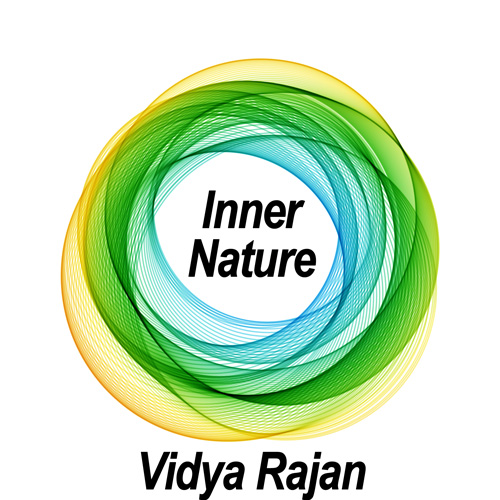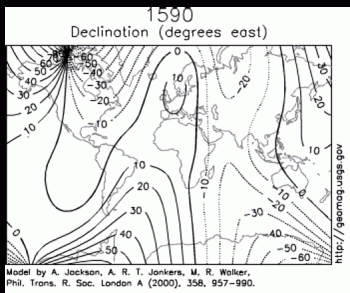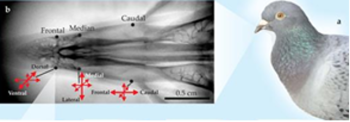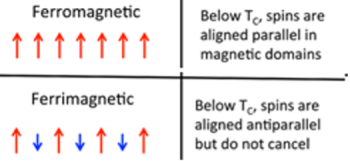By Vidya Rajan, Columnist, The Times
 In my previous Inner Nature article, the focus was on animals which make or use electricity to protect themselves or to apprehend prey. In this article, the focus moves to animals which sense and use magnetic fields. The staggering feats of navigation prowess of birds and butterflies are thought to be made possible by the Earth’s magnetic field to guide them to their breeding or feeding grounds. Below, I briefly review some of the current thinking of how such magnetic field-assisted route-finding may work.
In my previous Inner Nature article, the focus was on animals which make or use electricity to protect themselves or to apprehend prey. In this article, the focus moves to animals which sense and use magnetic fields. The staggering feats of navigation prowess of birds and butterflies are thought to be made possible by the Earth’s magnetic field to guide them to their breeding or feeding grounds. Below, I briefly review some of the current thinking of how such magnetic field-assisted route-finding may work.
To set the stage: The Earth has a magnetic field which is caused by its dynamo – the movement of positively charged iron ions in its core. The movement of these particles sets up a current[1] which induces a magnetic field similar to a bar magnet. The Earth’s magnetic north is currently[2] located in the geographical south, and its magnetic south is located in the geographical north. The force lines are considered to run from magnetic north to south. Unlike true magnets, the declination – the difference between geographical and magnetic meridians – varies over time and place and is shown by “agonic” lines (click on Figure 1). The movement of magnetic poles is caused by the sloshing of molten iron in the interior of the planet. The bar magnet’s poles may suddenly reverse – the signatures of these reversals are contained in the orientation of ferromagnetic atoms in rocks, which show that they happen on average every 450,000 years.[3] The inclination (dip) of the magnetic field is not flat or even: it points directly up at the poles and lies flat at the equator.

Figure 1: Animation of the movement of the “agonic line” showing the degree of declination between magnetic and geographical meridians over time. Click on the arrowhead to activate the animation. By U.S. Geological Survey (USGS) http://www.usgs.gov/ – https://www.usgs.gov/media/images/declination, Public Domain, https://commons.wikimedia.org/w/index.php?curid=1733830
Magnets were discovered over 3,000 years ago when the Chinese and Greek independently noticed that slivers of a certain rock later named ‘lodestone’ swiveled to always take the same orientation with respect to cardinal directions. This rock was shaped into a long rod to make the compass needle, and helped navigators orient themselves in featureless regions, such as oceans or deserts. But unbeknownst to them, animals had been using the magnetic poles of the planet for millennia to orient, or to navigate through the air, water and on land. Animals sensing magnetic fields include molluscs, crustaceans, insects, amphibians, fish, reptiles, birds and mammals, and this ability may extend to organisms as humble as phytoplankton and bacteria.[4],[5] In a clever piece of research that almost anyone with a computer could do in their spare time, researchers in Germany used Google Earth to spy on cows peacefully grazing around the world and noted that they lined up north-south along the magnetic field.[6] The same was true of deer. (Anecdotally, I had observed that my dog squatted to take a dump along meridian lines the couple of times I happened to have a compass on me. Coincidence? Maybe those of you with dogs can replicate the experiment.)
Some humans claim they can sense magnetic fields as well.[7] In one experiment, participants shielded from electromagnetic waves and exposed to changes in an artificial field about the intensity of the earth’s showed changes in their brainwave patterns, which is a sign of sensory processing. Additionally, the ability of the Gurundji people from Australia to identify cardinal directions irrespective of time of day have been documented. The Gurundji use cardinal directions to convey positional information;[8] for example, my friend is sitting on my west, i.e. my friend sitting on my left, when the speaker is facing towards the north.
Now let’s turn to mechanisms.
The ability to sense magnetic fields is called “magnetoreception”. The mechanism is not necessarily all similar, and there are three proposals on how it works:
- The use of magnetic minerals such as magnetite crystals, which respond to the earth’s magnetic field.[9] Bacteria and phytoplankton contain such minerals (Figure 2), and they have been identified in birds’ beaks. Flagellated bacteria found in marine sediments contain inclusions of ferrimagnetic[10] elements such as magnetite. Bacteria with these inclusions migrated swiftly to the north. Why? No one really knows but perhaps it is a way to colonize new areas.

Figure 2: Bacterial magnetoreceptors. Transmission electron micrograph of the bacterium Magnetospirillum magnetotacticum showing the chain of magnetosomes inside the cell. The magnetite crystal incorporated in each magnetosome is about 42 nm long. Adapted from Reference [11] under fair use.
- The second proposal is that animals that sense electric charges (such as were discussed in last month’s Inner Nature article) could deploy the electrical fields they themselves generate to sense magnetic fields (Figure 3). Presumably the magnetic fields affect their electrical field, and they can sense that modulation.

Figure 3: Evidence for magnetite-based magnetoreception. (a) The homing pigeon Columba livia provides some of the best evidence. (b) X-ray image of the upper beak of C. livia, showing the three pairs of iron-containing areas and the prevailing orientations of their neurons. Adapted from Reference [12] under fair use.
- The third method involves biochemical reactions which produce quantum-entangled radicals in pairs which are then sensed by cryptochromes. Cryptochromes are receptors in the cell which appear to regulate circadian rhythms and may mediate reception of other environmental electromagnetic and radio fields such as the energy coming from power equipment. The elaborate mechanism in Figure 4 shows that excitation of an atom releases a pair of radicals[13] that react with the cryptochrome, converting the state (singlet or triplet) of the radicals, which triggers a signaling cascade. This signaling cascade influences the bird to change direction and the movement further changes the proportion of singlet and triplet forms. This concept was really hard for me to understand, and I apologize if I have made this explanation as clear as mud; that is how clear it is to me.

Figure 4: The cryptochrome ErCRY4 is excited by light and produces a radical pair which is entangled but either forms a triplet or a singlet state. The ratio of triplet-singlet If the bird changes direction, the change in the relative orientation of the magnetic field drives a shift in the proportions of the singlet and triplet states, leading the bird to change direction. Adapted from Reference [14] under fair use.
Bibliography
[1]. Although the word ‘electricity’ comes from the movement of negatively charged electrons which carry energy, in the early eighteenth century when electricity was being newly investigated, the existence of electrons was not known. Benjamin Franklin made a mistake in attributing the nature of electric current to the flow of positive charges. So, to accommodate this historical mistake, the movement of current is in the opposite direction to the movement of electrons.
[2]. The magnetic field is odd, because its declination (angle between geographic and magnetic meridians varies across the earth’s surface. There is also magnetic inclination (dip), which is the angle of the magnetic field in relation to the horizontal at the specific location. At the equator, the inclination is flat, but it points straight down at the poles.
[3]. Wikipedia Contributors (2019). Geomagnetic reversal. [online] Wikipedia. Available at: https://en.wikipedia.org/wiki/Geomagnetic_reversal
[4]. Davide Castelvecchi (2012). Magnetic Sense Shows Many Animals the Way to Go. [online] Scientific American. Available at: https://www.scientificamerican.com/article/the-compass-within/ [Accessed 23 Apr. 2025].
[5]. Johnsen, S. and Lohmann, K.J. (2008). Magnetoreception in animals. Physics Today, 61(3), pp.29–35. https://doi.org/10.1063/1.2897947
[6]. Cressey, D. (2008). ‘Magnetic cows’ are visible from space. Nature. [online] https://www.nature.com/articles/news.2008.1059
[7]. Servick, K. (2019). Humans—like other animals—may sense Earth’s magnetic field. Science. https://doi.org/10.1126/science.aax3763
[8]. Anu.edu.au. (2021). Searching for a sixth sense with Gurindji people | Australian National University. [online] Available at: https://www.anu.edu.au/events/searching-for-a-sixth-sense-with-gurindji-people.
[9]. Blakemore, R. (1975). Magnetotactic bacteria. Science, 190(4212), pp.377–379. https://doi.org/10.1126/science.170679
[10]. There is a difference between ferromagnetic and ferrimagnetic. Ferromagnetism leads to strong magnetism due to the orbital spin of unpaired electrons aligned in the same direction, whereas ferrimagnetism is weaker because the spins are not all aligned. In a naturally occurring rock, called magnetite, the atoms are not all pointing in the same direction, leading to lower net magnetization. The image below is modified from Chem Libre Texts’ Chapter 6.8: Ferro-, Ferri- and Antiferromagnetism and reproduced under fair use for educational purposes.
[11]. Frankel, R.B. and Bazylinski, D.A. (2002). Magnetotaxis: Microbial. [online] https://doi.org/10.1038/npg.els.0000397.
[12]. Johnsen, S. and Lohmann, K.J. (2008). Magnetoreception in animals. Physics Today, 61(3), pp.29–35. doi:https://doi.org/10.1063/1.2897947
[13] A radical is an atom or molecule with an extra unpaired valence electron. The unpaired electron seeks a partner, making radicals extremely chemically reactive.
[14]. Warrant, E.J. (2021). Unravelling the enigma of bird magnetoreception. Nature, [online] 594(7864), pp.497–498. https://doi.org/10.1038/d41586-021-01596-6
[15]. Liang, C.-H., Chuang, C.-L., Jiang, J.-A. and Yang, E.-C. (2016). Magnetic Sensing through the Abdomen of the Honey bee. Scientific Reports, [online] 6(1), p.23657. https://doi.org/10.1038/srep23657




